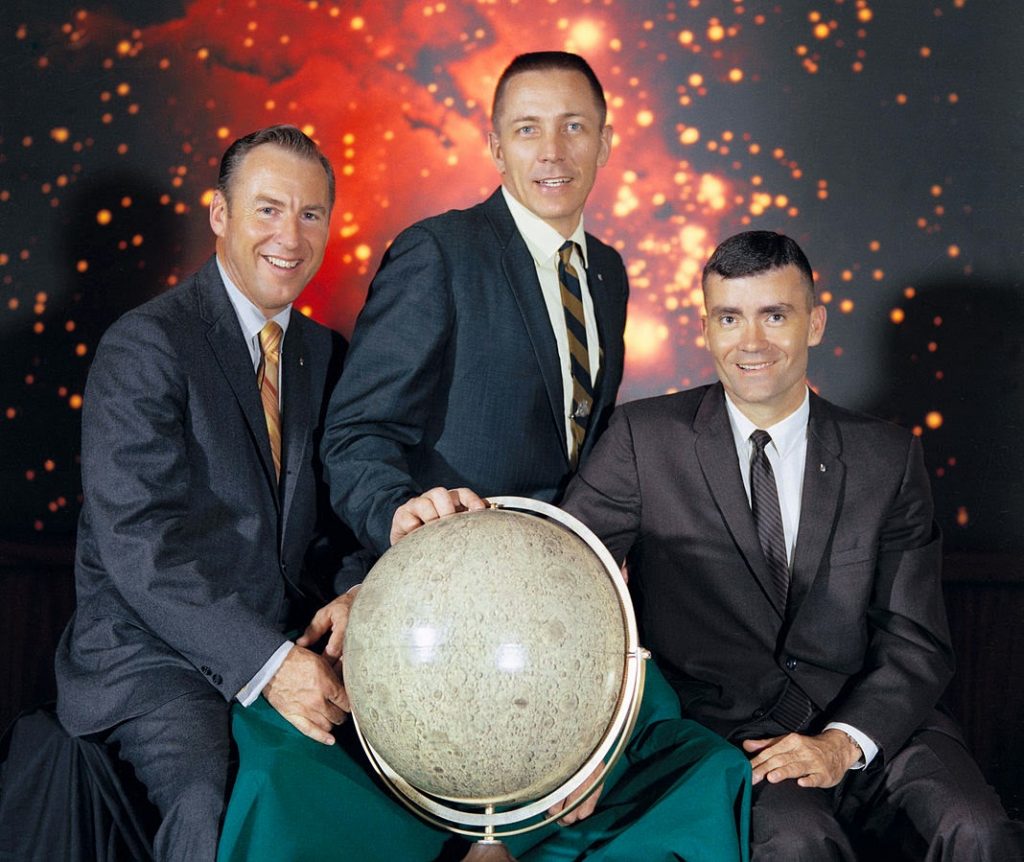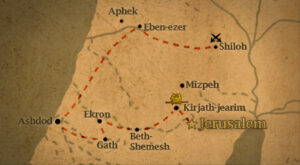The Apollo 13 lunar expedition suddenly turned into a survival mission when an explosion risked the lives of the crew, but turned out to be a successful failure. Before we examine the remarkable success accomplished by NASA, let’s travel back to the beginning of the mission. The main objective of Apollo 13 was to performed a lunar expedition. However, the crew encountered unexpected outcomes throughout the trip. The adventure of Apollo 13 lasted 143 hours and began on April 11, 1970, in Cape Kennedy, Florida. At 2:13 p.m., Apollo 13 was heading to the moon and its respective mission, when it experienced an explosion, then malfunctions, and subsequently doubts of ever making it back home alive.

During the first two days of the mission, the crew ran into minor surprises. But everything was looking as if Apollo 13 was the smoothest flight of NASA’s so far. A message came by Joe Kerwin, the capsule communicator, after 46 hours and 43 minutes, saying, “The spacecraft is in real good shape as far as we are concerned. We’re bored to tears down here.” That would be the last time somebody mentioned the word bored for a long time.1
At 55 hours and 46 minutes the crew finished a TV broadcast on how comfortable they were and that everything was fine in space. Nine minutes after the TV broadcast, a massive explosion occurred inside the spacecraft, causing a loss of electricity, light, and water. After the explosion, Apollo 13 was about 200,000 miles from Earth. The message was transmitted to Earth at 9:08 p.m., April 13, with the famous phrase, “Houston, we’ve had a problem.” James Lovell, the commander, told the ground that the main breaker was undervolted.2
The explosion left the crew in very bad shape, as they lost two of three fuel cells, which were the spacecraft’s prime source of electricity. Thirteen minutes after the explosion, Lovell saw through the window the final evidence of the catastrophe. “We are venting something out into the … into space,” Lovell reported to Houston. As Capcom Jack Lousma replied, “Roger, we copy you venting.” Lovell said, “It’s a gas of some sort.” The substance venting out was oxygen gas escaping at a high rate from the second and last oxygen tanks.3
An hour after the explosion, mission control sent a message, “we are now looking toward an alternative mission, swinging around the Moon and using the lunar module power systems because of the situation that has developed here this evening.” The crew was instructed to move to the lunar module, which would now be used as a lifeboat, and turn off completely the command module for re-entry. Meanwhile, the damaged Apollo 13 swung around the moon. The idea of landing on the moon was no longer an option for NASA. It was now a rescue mission.4
The crew and ground control were confronted with two problems to solve. First, getting the spacecraft and crew on the fastest route back home. Second, conserving consumables, power, oxygen, and water. The conservation of consumables began by shutting down the command module, which was only used as a bedroom. They also turned down all the systems in the lunar module, except for those required as life support, communication, and environmental control. For the first issue, after a great dealing of calculations and simulations at the Mission Control on Earth, they concluded that the Lunar Module’s engines could handle the requirements. Thus, the engines were fired to boost their speed another 860 fps, cutting the flight time by 10 hours.5

Finally, Apollo 13 rounded the Moon and began its journey back home. However, the problems were not entirely eradicated. The re-entry procedure required two more corrections. One was to align the spacecraft more towards the re-entry route. Moreover, the second issue was to fine tune the angle of entry, which had to be between the narrow range of 5.5 and 7.5 degrees. As the shuttle lacked power, the crew was forced to determine the altitude of the spacecraft manually. Normally the procedure would be routine; however, they experienced difficulties during the process, because the explosion had caused them to be surrounded with debris. Subsequently, they could not observe star sights, so the altitude of the shuttle became challenging to estimate. Mission control gave the answer to use the same strategy Apollo 8 used, in which the sun would be used as the alignment star.6
Just short of four hours before re-entry, Apollo 13 ejected the damaged Service Module. As the Service Module move away, Apollo 13 was able to see the damage. Two and a half hours before re-entry, Apollo 13 brought the command module back to life. As the system turned on, everyone aboard and at Mission Control, and around the world, had a sigh of relief. An hour later, the Lunar Module was also ejected. Mission control send a message, “Farewell, Aquarius, and we thank you.”6
The Apollo 13 Command Module carrying Jim Lovell, Fred Haise, and Jack Swigert, touch the Pacific Ocean on April 17, 1970 at 1:07 p.m. EST. Forty-five minutes later, USS Iwo Jima, recovery ship, came and brought the crew aboard. After 142 hours 54 minutes 41 seconds, Apollo 13 returned to Earth. The survival mission ended up being a successful failure, as nobody died and all came back to Earth alive from an almost impossible mission 200,000 miles from home.
- Office of Public Affairs, National Aeronautics and Space Administration, Apollo 13: “Houston we’ve got a problem,” Washington: Library Catalog, 1970. ↵
- Encyclopedia Britannica, s.v. “Apollo 13”, last modified September 7, 2017, https://www.britannica.com ↵
- Michael S. Rosenwald, “’Houston, we have a problem’: The amazing history of the iconic Apollo 13 misquote,” The Washington Post, April 2017, https://www.washingtonpost.com. ↵
- Nick Greene, “Apollo 13: A Mission in Trouble,” ThoughtCo., (2017). https://www.thoughtco.com. ↵
- Encyclopedia Britannica, s.v. “Apollo 13”, last modified September 7, 2017 https://www.britannica.com . ↵
- Nick Greene, “Apollo 13: A Mission in Trouble,” ThoughtCo., (2017). https://www.thoughtco.com. ↵
- Nick Greene, “Apollo 13: A Mission in Trouble,” ThoughtCo., (2017). https://www.thoughtco.com. ↵



65 comments
Regina De La Parra
This was such a good article to read. I wanted to read it all the way to the end. I knew there had been problems with Apollo 13, but I didn’t know exactly what had happened while being on the spacecraft. I enjoyed reading this article because of the way the sentences were organized and explained. One of the best articles I have read so far. Great job Eduardo!
Luis Morales
The topic of space travel has always caught the attention of the world, and the story of Apollo 13 is no different. The story of the Apollo 13 mission is an intriguing story. It was the title and the first paragraph that drew my attention to read this article. It must have been scary to see oxygen that is keeping you alive, be released into space. It was well put, and describe the story has if it was happening right in front of me.
Jose Figueroa
I have a deep love with outer space and wanting to explore it, so much so that i almost decided to study aerospace engineering. Apollo 13 is easily one of the most identifiable space missions for there famous “Houston we have a problem,” quote. The story was excellently structured as I found myself wanting to read more and more. You were able to paint a very vivid picture of the events and create lots of tension. Just when i thought hope was lost, it was found once again. It was a very fun read!
Iris Henderson
This story of Apollo 13 was absolutely captivating. The author provided great detail, I actually felt a bit anxious just reading this story! I am happy that we were able to recover all of our courageous astronauts with the amazing calculations and quick thinking of NASA and all involved. This article made me think how I would react in that situation and I am not certain I would have been able to maintain a calm disposition, especially after realizing all of the oxygen escaping the capsule at 200,000 miles away from Earth!
Constancia Tijerina
The topic of space has always interested me most. Not only my adoration for space is what pulled me in to read this article, it was the first couple of sentences that had truly intrigued me. I have had prior knowledge of the Apollo 13 mission, but I truly never understood what had happened or what caused this American tragedy before this article. I appreciate the extensive research of what had happened during this panicked situation, the diction used within this article really captures the anxiousness within a person of how are these men going to survive, are they going to make it and for those who have no knowledge of this event, whether if they would ever make it. Furthermore, this article is one of the best I have read thus far.
Erin Vento
This was a really cool article!! I had never really heard about Apollo 13 before (but I think there’s a movie about it) and throughout the whole article I was nervous for the men aboard. It’s really scary how everything was fine and then suddenly the whole mission was doomed, and I guess it’s also scary that the men in space had to trust the men back on Earth to help rescue them.
Kayla Lopez
This subject is one I know a great amount about so it really caught my attention. Despite me being very aware about Apollo 13, I did not know that the whole mission lasted 142 hours, 54 minutes, and 41 seconds. I had never thought about it as being a “successful failure” but after reading this article I can see why it would be called that.
Hanadi Sonouper
Throughout the entire article, I was completely engaged about the Apollo 13 story. My thoughts would have been scattered and ambushed by fear if I was put in one of their shoes, however the overall moral of the story is that they survived, and that they survived with courage. It is remarkably amazing that engineers, physicists are able to calculate such mass quantities of numbers down to the very last decimal to make the mission goes to order. Nonetheless, like all plans there can be problems to endure, however, it was dealt with agility and skill by the astronauts to make it home traveling 200,000 miles, it is truly a remarkable story.
Edgar Ramon
I did not know this was a true story… Of course I also have not been wowed by our barely growing space exploration history. This is truly the story of 3 brave men, it was a pleasant change of topics from what I usually read, which is more over to the ancient and before 1500 history. Hopefully this will be one story of many in the future of space exploration someday.
Rafael Lopez-Rodriguez
Great article on the Apollo 13 crew! This movie is one of my favorite space movies because the story keeps you tense about what is going to happen to the crew. I can never imagine myself going through a situation like this in space. This must have been the scare of a life time for the astronauts. I like how detailed this article is about what happened since the ship took of to space. Very amazing!